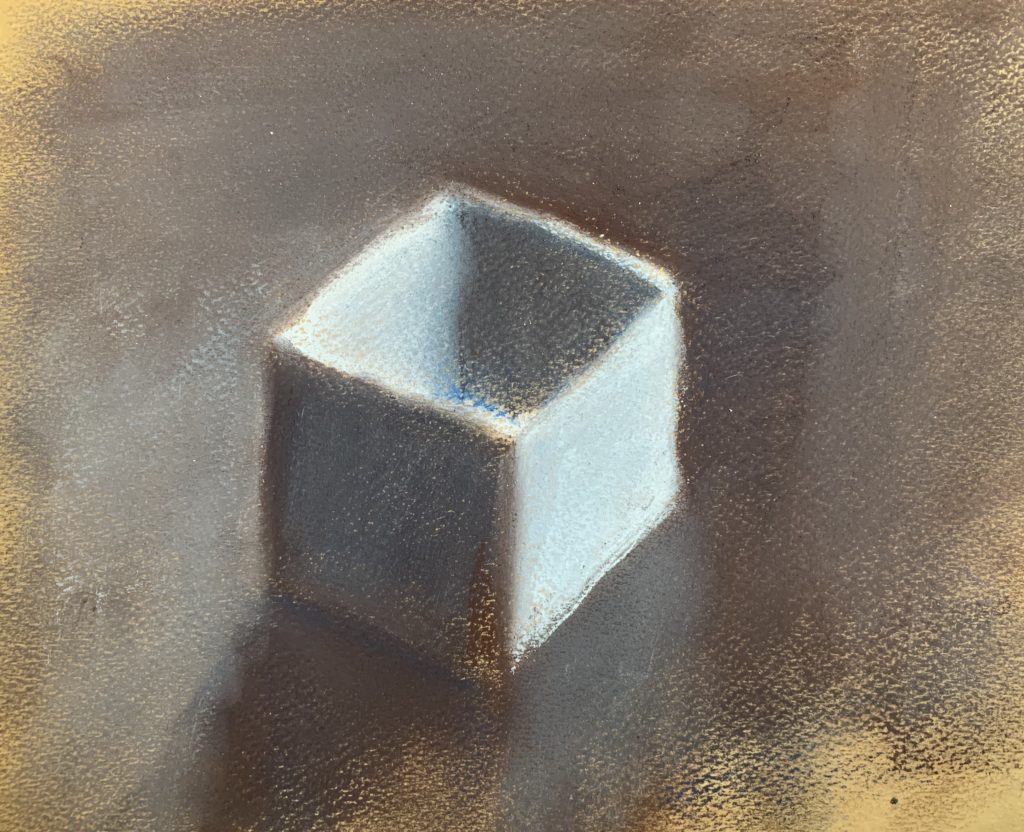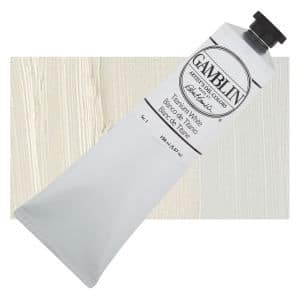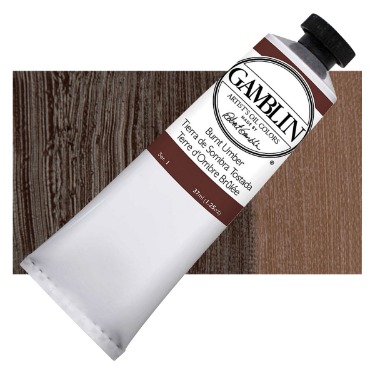A limited palette is when the colors used for a painting are limited to the bare essentials. Using such a palette can be incredibly helpful for those first learning how to mix colors. However, it is also advantageous for more advanced painters. When using only a few colors one learns a great deal about each one and what types of colors they can mix from them.
I remember spending hours mixing with just a few colors on my palette – I learned so much about each color and their properties. Often, when we limit our choices to a few things we are able to take most advantage of the materials available to us.
In this article I will go over with you the different types of limited palettes you can use!
Black and White – monochrome limited palette
Just using black and white is the simplest and most pared down version of a limited palette you can use because you do not have to deal with color.
Below is an example of a painting done in a monochrome black and white palette. You can see how there is a very clear value structure in the piece.

The most important element in painting is tonal value. If you are a regular reader of this blog you have probably heard me say this many times! The easiest way to understand tonal value is to use black and white so that one is able to just focus on value without the distraction of color.
Doing this can help one to understand and master value more which will help immensely when using color.
Warm/ Cool Limited Palette
A slightly more expanded limited palette is what I call the warm/cool palette. It uses brown, blue and white. Brown is of course the warm color and blue the cool color. Using this method helps one to still focus on value while still incorporating a little bit of color into the mix.
Below you will see a pastel drawing using the brown, blue and white palette. There is still a clear value structure, but also apparent attention to color temperature.

Temperature is a very important aspect to color. In fact, getting the temperature ‘right’ is more important than getting the color ‘right’. When the temperature is correct then the color will be right.
So, using the warm cool palette is an excellent way to dip your toes into the world of color!
The Zorn palette
The third limited palette I am introducing here is what is known as the Zorn palette. Named after the Swedish painter Anders Zorn (18 February 1860 – 22 August 1920).
The Zorn palette consists of just 4 colors – yellow ochre, ivory black, vermillion and white. Vermillion is a very expensive color today ($129 for a tube!), but many modern day artists substitute it for cadmium red light. Zorn however did not exclusively use this palette in all of his work, but it is presumed that he used it quite a lot.

Above is a work he painted using the Zorn palette. A testament to the variety you can achieve with just four colors! You will notice the four colors on the palette he is holding in his hand.
The downside of this palette is that there is no blue. However the ivory acts as a blue in this case. If you ever mixed ivory black with white you can easily see how it is a rather bluish color!
This is a great palette to use not just for the beginner painter who is learning about color, but also for the more advanced painter wanting to trim down their color palette.
Value over color
Using the Zorn palette limits the number of decisions you have to make when compared to using a much larger palette. You are forced to emphasize value over color which is a good lesson for beginning painters to learn. Starting out with a limited palette helps you to gain a firm understanding of value before incorporating more colors into the mix.











